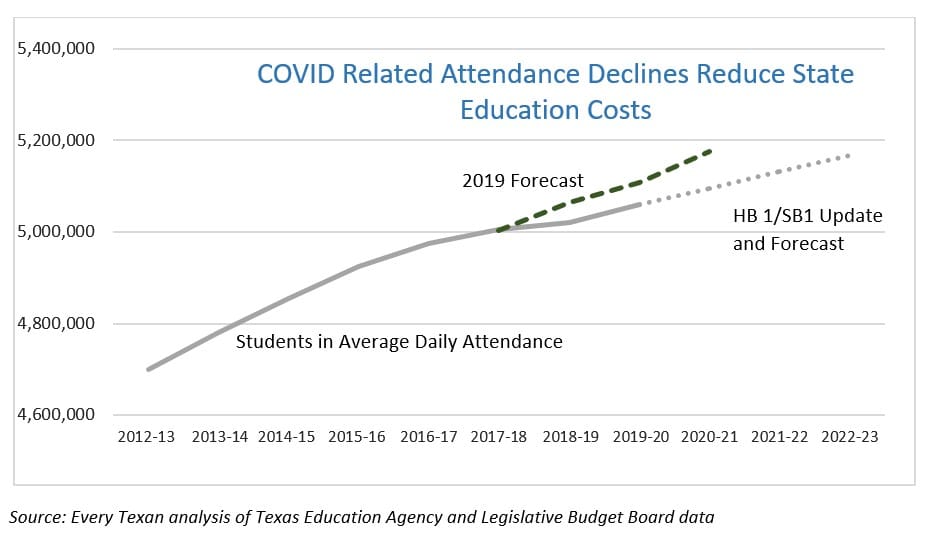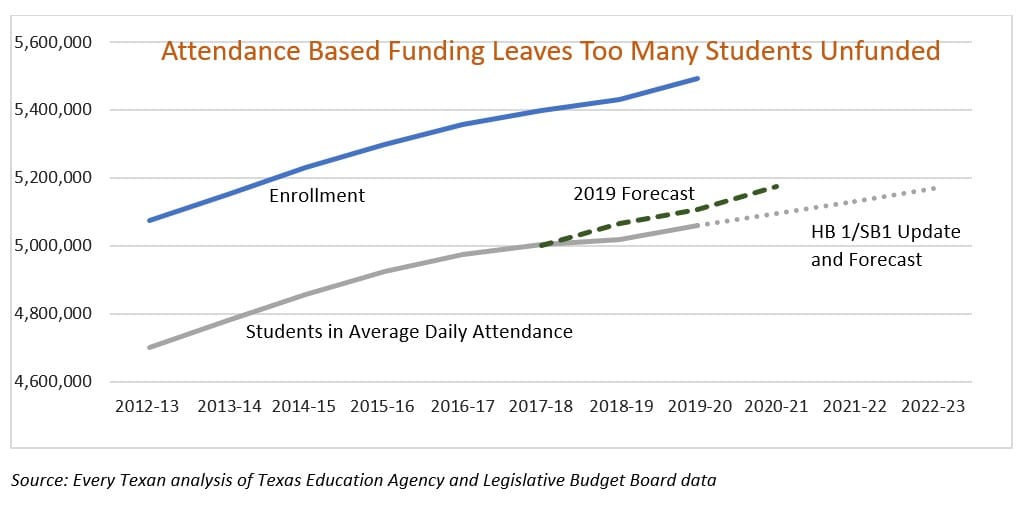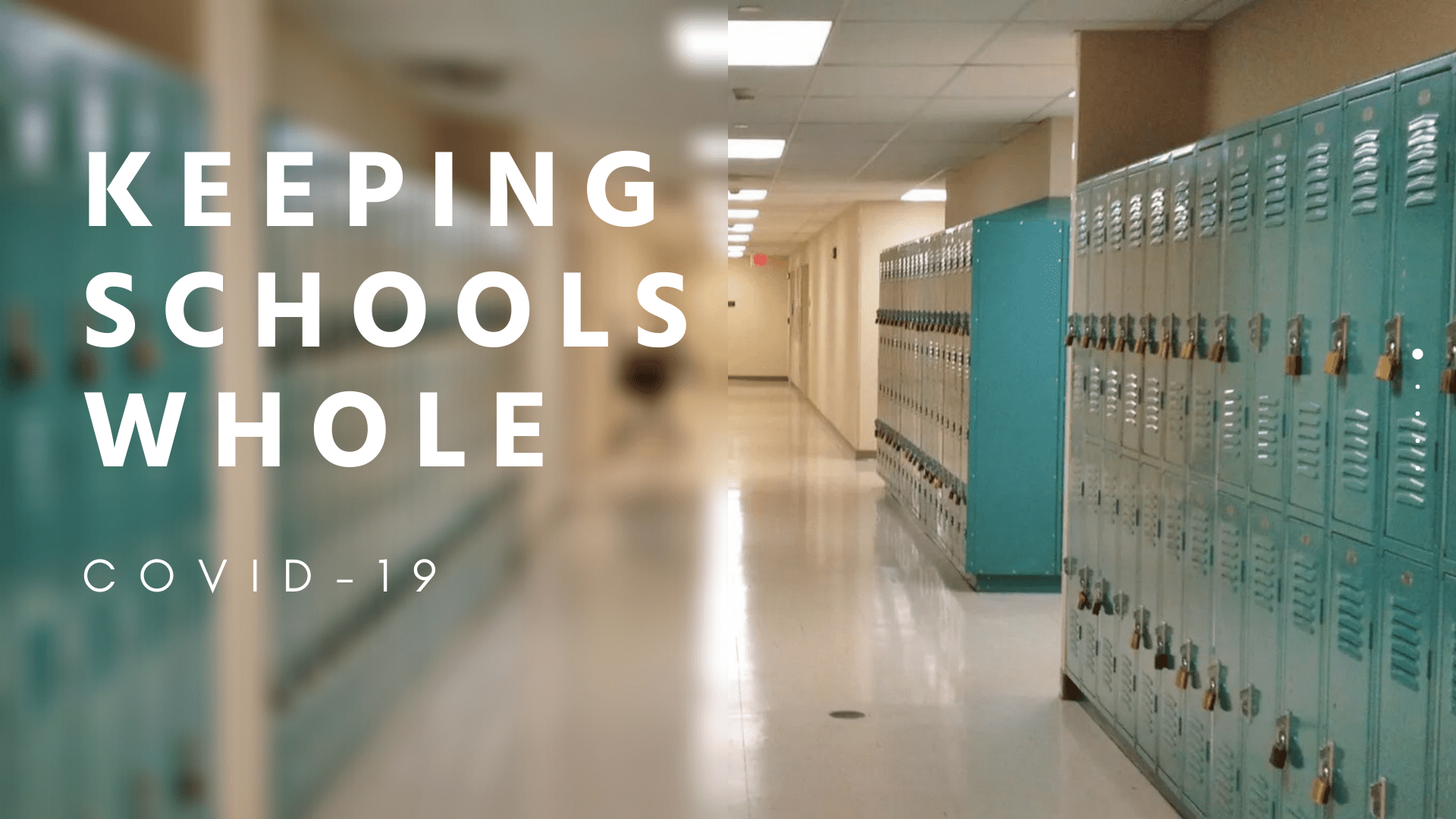Texas Schools at Risk of Significant Funding Cuts due to Pandemic-Related Attendance Loss
As the spread of COVID-19 became a global pandemic, disrupting every facet of our daily lives, Texas schools pivoted without warning or additional funding to continue the promise of public education. In the early days of the crisis, schools organized food distribution systems to ensure low-income students did not miss the school meals their families rely on. While districts worked to establish remote learning platforms, teachers printed and distributed lessons to their students to keep them on track and engaged.
It is a year into this pandemic and the commitment our schools have shown to enrolling and engaging students and their families has not waned. Our school districts conduct home visits, use data to identify eligible Pre-K students, and partner with non-profits to ensure students are enrolled and address barriers to remote participation.
Still attendance is lagging as families struggle to navigate working from home while parenting, insufficient devices and connectivity, and losses in income, health, and family members due to COVID. Because public education funding in Texas is based on attendance, our schools are at risk of losing over a billion dollars in funding this budget cycle if the Legislature does not act.
Holding School District Funding Harmless from COVID
Our schools need stability and COVID-specific supports to weather the remainder of the pandemic. To provide stability to school districts across the state, at a minimum, the Legislature should hold districts harmless from the effects COVID has had on attendance by using historic growth projections to fund schools in the coming budget. If the Legislature used the historic rate of growth for average daily attendance, the House and Senate budget proposals would have included funding for an additional 155,679 students in 2023.

Without this “hold harmless” funding districts will be forced to lay off teachers and will have fewer resources to engage in family outreach or address the loss of instruction time many students have experienced.
With the vaccine rollout, COVID’s grip on our communities will eventually loosen and young Texans will be returning to our schools. The decisions made today will determine the quality of the schools to which our children return. Without hold harmless funding, our schools will be scrambling to re-hire teachers as attendance grows and stabilizes. Forcing our schools to go through an artificial contraction due to short-term attendance loss will have long-term impacts on the programs and services schools provide students such as bilingual and special education.
Funding Every Student
Holding school districts harmless is the bare minimum the Legislature should do to ensure our schools have the resources they need to serve all students. Attendance-based funding disadvantages districts with high concentrations of low-income students and students with chronic health issues. Using funding to incentivize attendance is based on the unfounded assumption that absenteeism is mostly voluntary, and the primary cause is truancy. While 46 states use a foundation school program similar to that used in Texas, only seven states use attendance for funding (CA, ID, IL, KY, MS, MO, TX).
School districts plan and budget based on the number of students enrolled. Every student must be assigned a campus, classrooms, teachers, and desk space. The school must be prepared to educate every child every school day, even when a child is absent for the day. Schools do not save money when children are absent. In fact, chronic absenteeism brings additional costs such as remediation for students and administrative time for teachers and districts.
Attendance taking has become an overburdensome administrative task for teachers and districts during the pandemic. Lack of conformity across districts on how and when attendance is taken, coupled with students struggling to connect at the right times, has led to unreliable attendance data.

In 2020 of the nearly 5.5 million students enrolled, 434,350 or 8% of students were not reflected in average daily attendance for funding purposes. Because low-income students and those with chronic health issues drive higher absenteeism, using attendance for funding penalizes schools based on the types of students they serve. Districts with rates of low-income and other hard teach populations are being denied the resources needed to overcome the obstacles their students arrive with—including the issues that lead to chronic absenteeism.
The Legislature should adopt enrollment-based funding to improve equity, increase stability, decrease administrative burdens, and fund every student in Texas public schools.
Texans Value Public Education
When the pandemic struck Texas, our schools were first responders. With no blueprint to follow, Texas public schools developed online platforms, retrained teachers, distributed devices, and expanded internet access throughout communities. The role our schools have played during this pandemic is recognized and appreciated by Texans across the state.
In a recent poll by Raise Your Hand Texas, 56% of Texans give their community school an A or B rating. That’s up from 48% in 2020. Of the Texans polled 44% said they are more appreciative of their public schools because of their response to the pandemic. Most importantly, “more than 8 in 10 Texans are concerned that cuts in funding would impact the quality of public education.”
Texas schools are at risk of losing a large amount of funding this session due to pandemic-related drops in attendance. Forcing schools to layoff teachers and reduce programs and services for students at a time when needs are greatest will hurt the long-term recovery of the state. The current budgets proposed in the House and Senate would force an artificial contraction of our schools, right before Texans begin returning to work and students return to the classroom. The Legislature is offering the bare minimum while ignoring the desires of Texans to keep our schools whole throughout this crisis.
